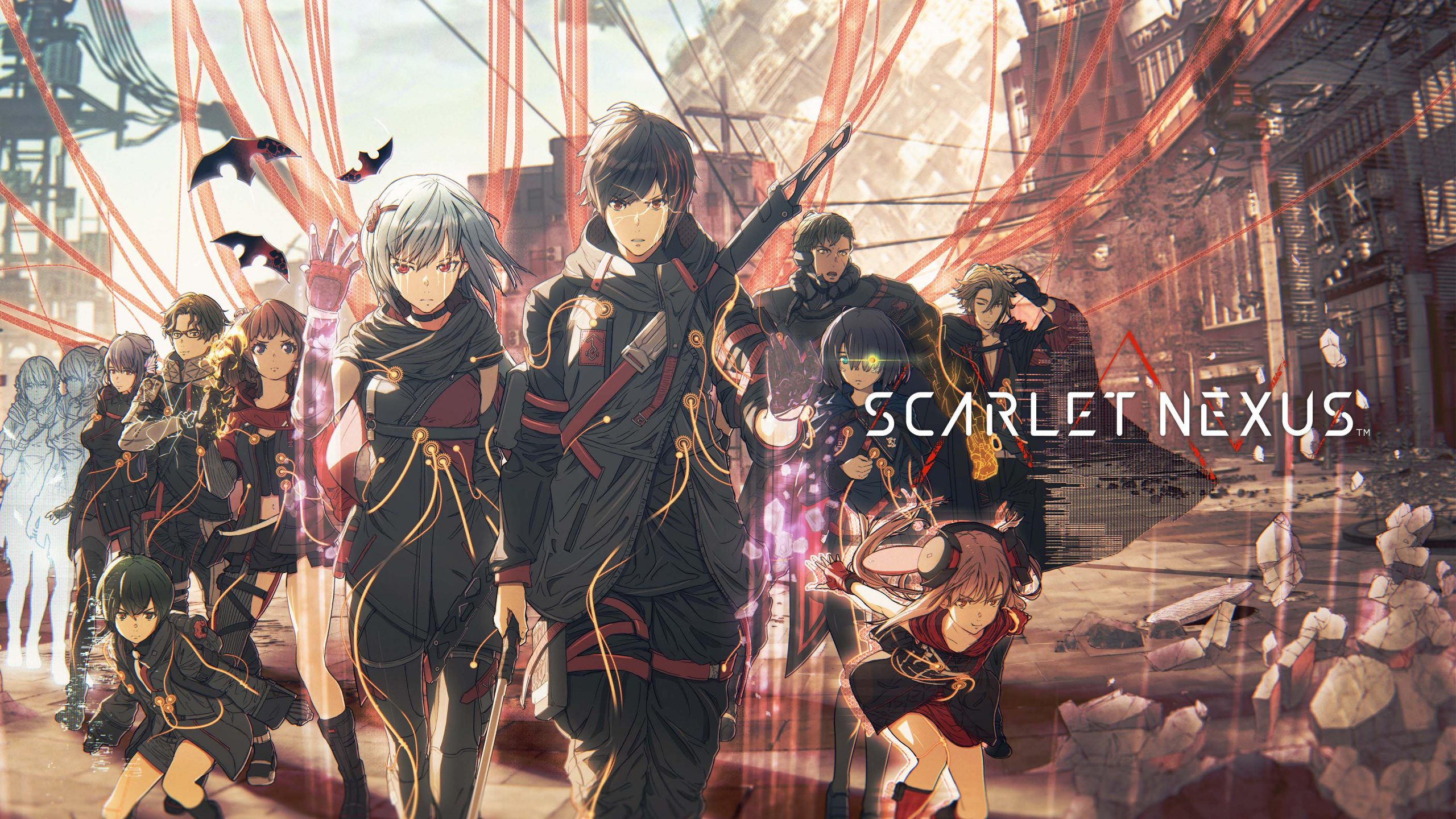
ⒸSCARLET NEXUS™ & ©Bandai Namco Entertainment Inc.
Development on SCARLET NEXUS started as an original Bandai Namco Studios IP, and was released on Xbox Series X|S (*1), Xbox One (*2), PlayStation 5 (*3), PlayStation 4 (*4), and Steam (*5) platforms on June 2021.
Our twelfth Development Episode presents stories from the project’s very beginnings to when the Brain Punk Action RPG concept started taking shape as we look back on its development and the many daring challenges it tried to take.
Participants were interviewed in an online discussion over Zoom. (Held September 2021.)
SCARLET NEXUS’ Development Staff
| Kenji Anabuki | Game Designer/SCARLET NEXUS Development Producer, Director |
|---|---|
| Kota Ochiai | Artist/SCARLET NEXUS Art Director |
| Asana Inoki | Game Designer/SCARLET NEXUS Scenario Director |
| Shoji Aomatsu | Engineer/SCARLET NEXUS Technical Director |
| Azuma Takeshi | Product Manager/SCARLET NEXUS Art Manager, Project Manager |
Born from Irregularity: The Blueprint of SCARLET NEXUS
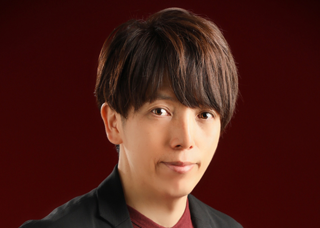
Game Designer
SCARLET NEXUS Development Producer, Director
■Anabuki: Today, we’ll be looking back on the development of SCARLET NEXUS to talk about some of the special things we did when making the game. As Producer, I’ll start off today’s session.
I was very happy to see positive feedback from both people who played the demo version and the full version. I try to keep a close eye on social media, and it felt very rewarding to see players notice the little details we put in over six years of hard work.
●Ochiai: I was pleasantly surprised to see how many players picked up on the ideas and information that we worked into the game. It’s not every day that people interpret the game world and characters exactly as the way you intended them.
●Inoki: The player takes control of either Yuito or Kasane for the entirety of SCARLET NEXUS, and the game was designed to present each character as likable. This makes players get emotionally invested in the character they pick and creates a more immersive experience. I was careful to make the game (in my capacity as Scenario Director) so that players would get to like the two main characters, but I was nervous about how it would be received up until people actually got to play the game. Ultimately, my worries were relieved since many people liked the game and its characters.
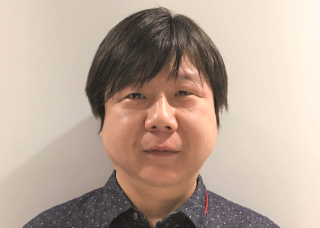
Engineer
SCARLET NEXUS Technical Director
●Aomatsu: I spent a substantial amount of time working on the multiplatform aspects of SCARLET NEXUS. It was fairly difficult as we didn’t have any in-house knowledge of the latest generation of consoles (Xbox Series X/S, PlayStation 5). However, I was happy to hear that many people were able to enjoy the action gameplay smoothly on current-gen consoles as well.
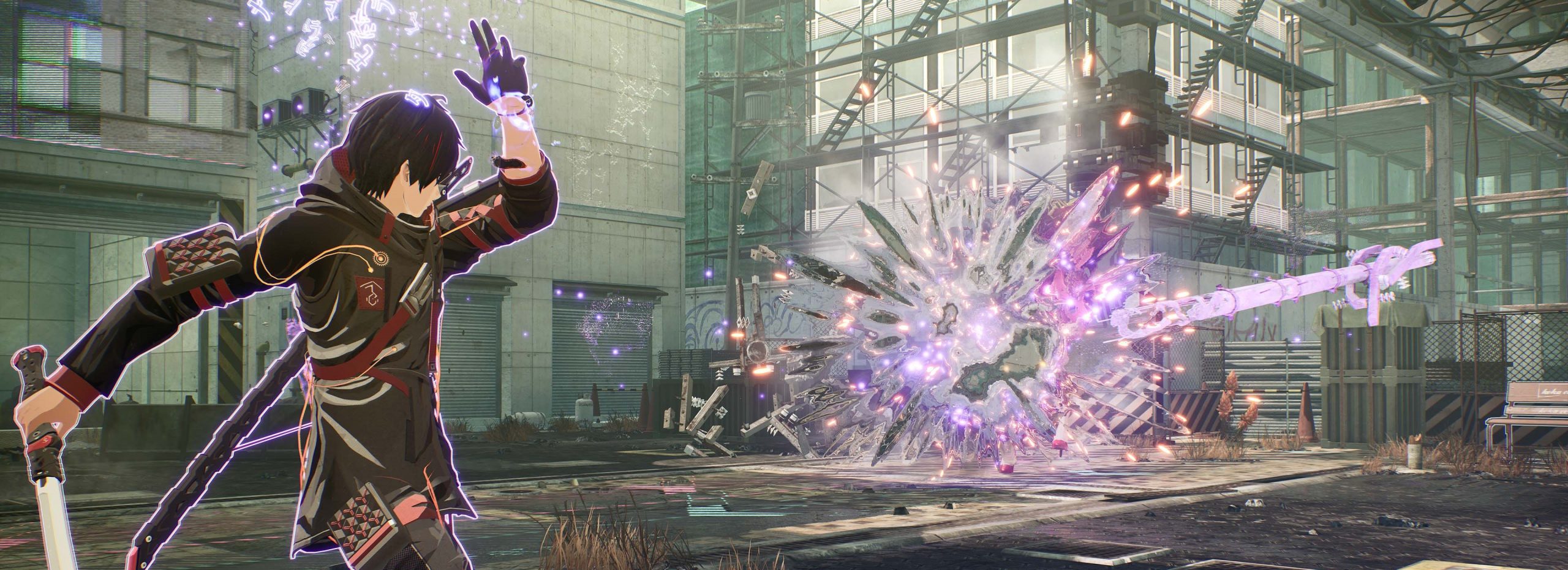
ⒸSCARLET NEXUS™ & ©Bandai Namco Entertainment Inc.
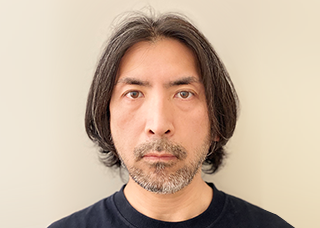
Project Manager
SCARLET NEXUS Art Manager, Project Manager
●Azuma: Judging from those around me, I was delighted to find out that other visual artists I knew found the game interesting. When we were budgeting out the game, there was talk that we might not be able to have action combat. But in the end, the game came out as an action title and it was nice that people praised it for its action elements.
■Anabuki: This game was made in a way that was different from other titles developed by BNS. It was irregular in that it started with me and Inoki wanting to test how players would react to us making an original game using the experience we gained from working on the Tales Of series. Although we were all working on other projects at the same time, we started by making the concept and prototypes with a team that consisted of only a handful of people.
●Ochiai: I think the company is fairly supportive of us when we want to try something new. There is of course a quality requirement we have to meet, but they responded to our interest towards this new challenge we put for ourselves. We were able to complete this original title not only because of the project team, but also help from members outside the project and our partner companies.
■Anabuki: It made me realize that there are chances for people to create original titles here in the company, as long as you make yourself heard.
The Team That Helped Us Take on New Challenges
■Anabuki: It took us about six years to develop SCARLET NEXUS, but the outline of the game was finalized fairly early on. One of my personal goals was to make a game using the universally liked motif of “a group of people with special powers”, and got Occhi (Ochiai) and Inoki to join the team to flesh out the art and story aspects of the game and create its setting.
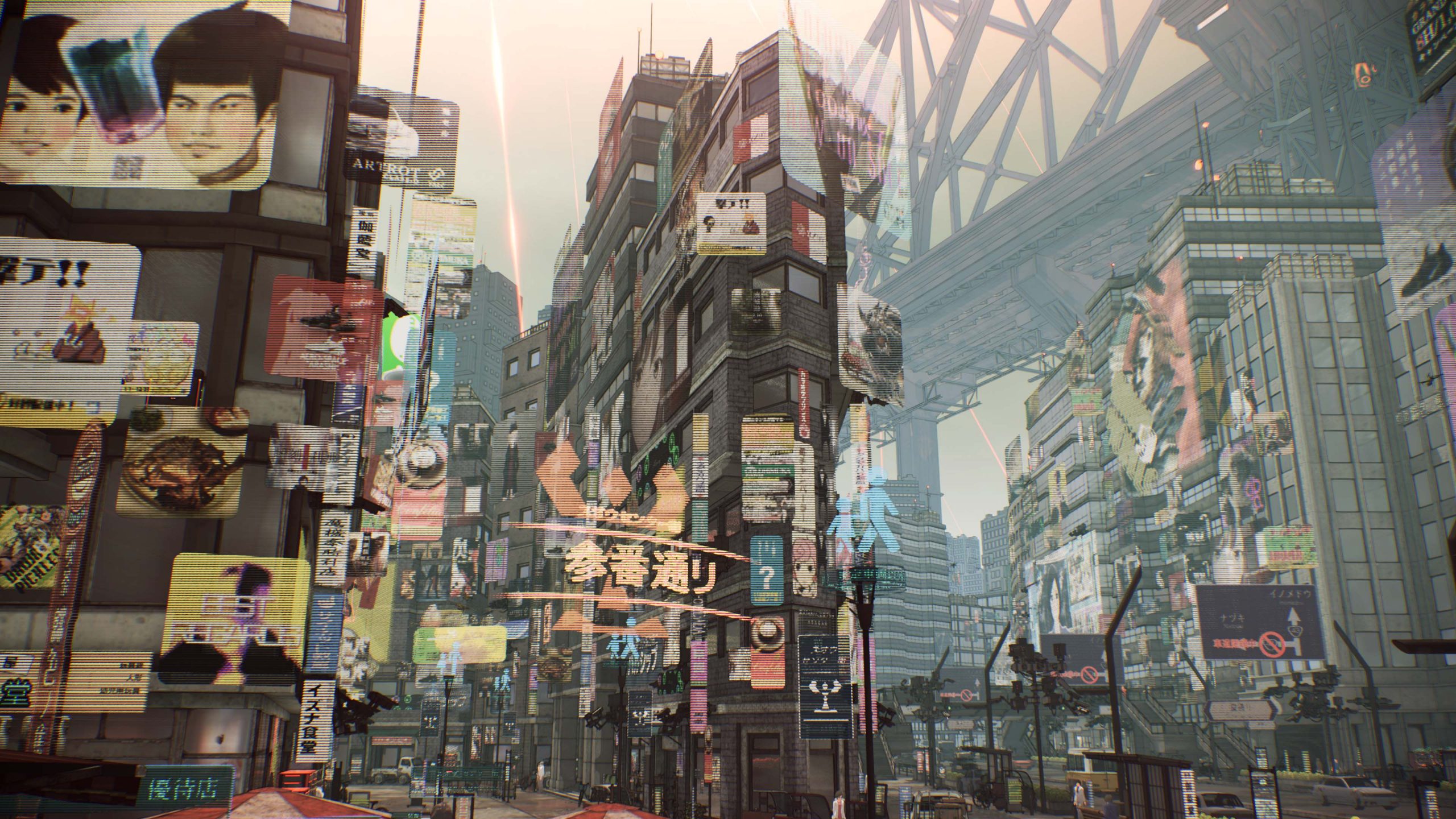
ⒸSCARLET NEXUS™ & ©Bandai Namco Entertainment Inc.
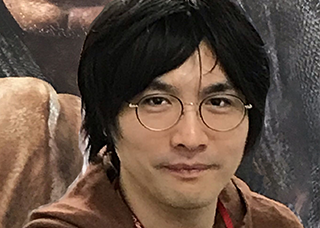
Artist
SCARLET NEXUS Art Director
●Ochiai: We wanted to make a world that players could easily get invested in, so we paid attention to making the visuals not lean too much into fantasy. The goal was not to make an entirely new world for the game, but to create something that was an extension of the world we currently live in. This also had the side benefit of being able to highlight certain aspects of our designs which didn’t look ordinary.
■Anabuki: If anything, the Others(*6) turned out to be really iconic because Occhi got Masakazu Yamashiro to work on them.
*6: Others
The enemies of SCARLET NEXUS. They are creepy-looking and mysterious, and the player unravels their mysteries as they progress through the game.
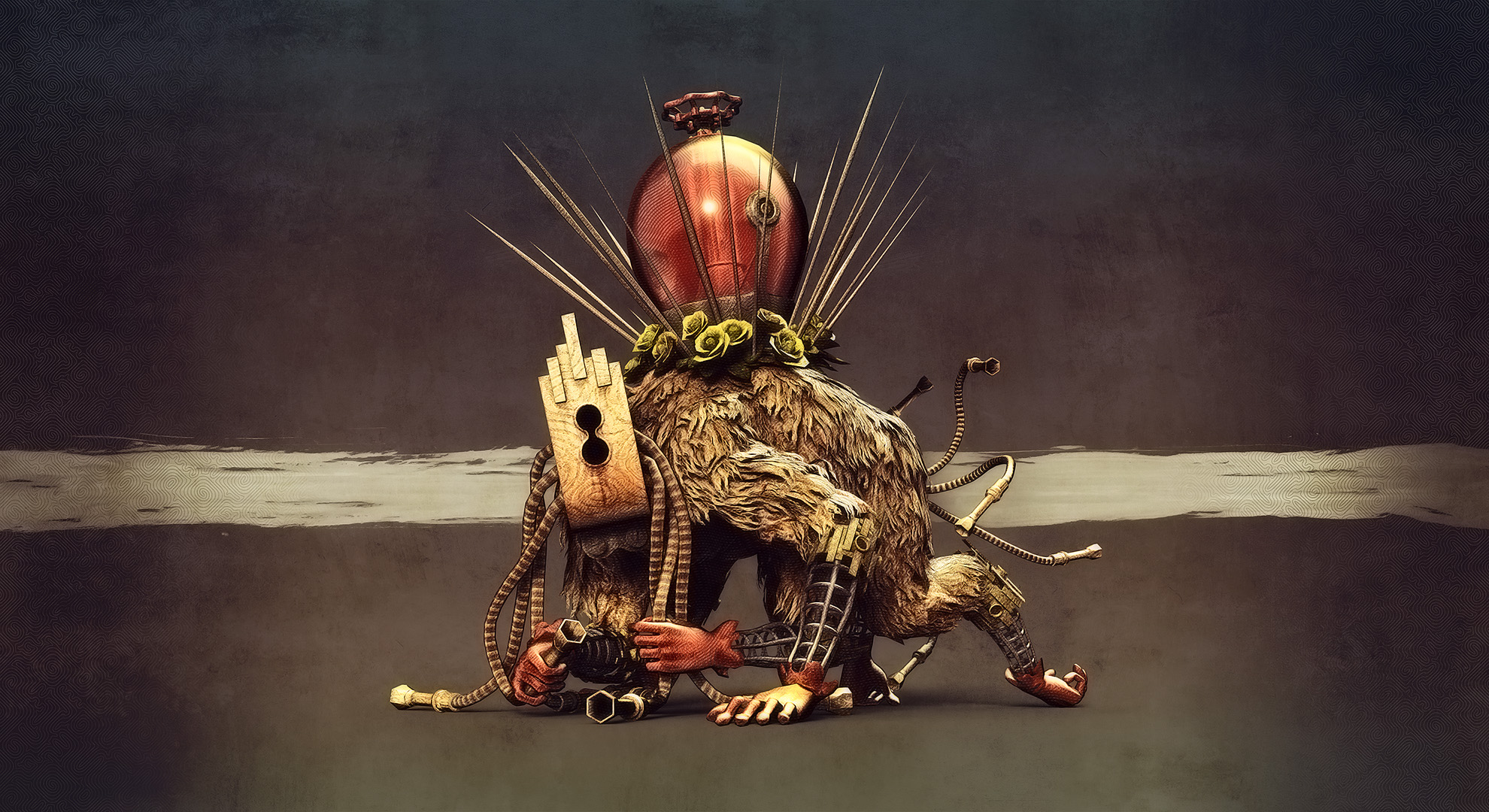
ⒸSCARLET NEXUS™ & ©Bandai Namco Entertainment Inc.
●Ochiai: Since the very beginning we wanted to take the art in this game in a more daring direction, which is why we chose Yamashiro-san as the artist for the Others. Our choice of realistic backgrounds with anime characters was another challenge we gave ourselves to see how well we could blend the two naturally.
■Anabuki: I thought the concept of “futuristic but nostalgic” was a perfect fit for SCARLET NEXUS when Occhi told me about it.
●Ochiai: Initially, there was a discrepancy between what we wanted to make and the actual resulting output, and we ended up doing a lot of trial and error since we thought there was more we could do with the visual design. This was something me and the team had trouble with. If we didn’t have good output, it would unease the other team members.
In the beginning, the team tried a bunch of ways to make the game appear intentionally unnatural, like using a toon look for the Others or collaging characters on top of photographed backgrounds. The result of this testing is what we have in the game now.
●Aomatsu: Normally, we try to match how the good and bad guys look in a game artistically. But to make the Others pop out, we programmed a rendering shader that you wouldn’t usually use for video games. They ended up looking more prominent on screen, and people even told us that they never saw something like the Others in a game before. So the visuals of SCARLET NEXUS was also very rewarding from a programmer’s point of view.
The Woes of Writing Two Games’ Worth of Story
■Anabuki: Now that I think about it, our scheduling was pretty tight, wasn’t it?

Game Designer
SCARLET NEXUS Scenario Director
●Inoki: There was enough story for two games in SCARLET NEXUS since it has two main characters. Yuito and Kasane’s stories are independent of each other, and while they may share scenes, they have different story in these scenes. It was difficult to keep Yuito’s and Kasane’s stories separate, but have common elements to keep the overall plot interesting, since the characters had to have different stories and we wanted players to experience them from the perspective of the character they were currently controlling.
There were also plans initially to change characters as the player progressed through each chapter. But this meant that players wouldn’t know whether they should side with Yuito or Kasane, and we felt that making players switch their allegiance back and forth between the two characters wasn’t what we wanted to do with this game. That’s why we thought it was best for players to stick with either Yuito or Kasane for the entirety of the story.
■Anabuki: The project started with us wanting to work with Yoshito Higuchi, our manager at the time (now Studio Manager), and we all wanted to make a story with dual protagonists targeted towards young adults. Inoki and I both have experience developing Tales of Xilia, which also featured a plot with two main characters, so we wanted to make use of the knowledge and lessons learned from that game.
●Inoki: Our experience with Xilia told us that if we were to put the characters on opposing teams, they needed to be polar opposites. Characters usually end up making the same choices if they’re on friendly terms with each other, so we tried to keep Yuito and Kasane at each other’s throats in the game.
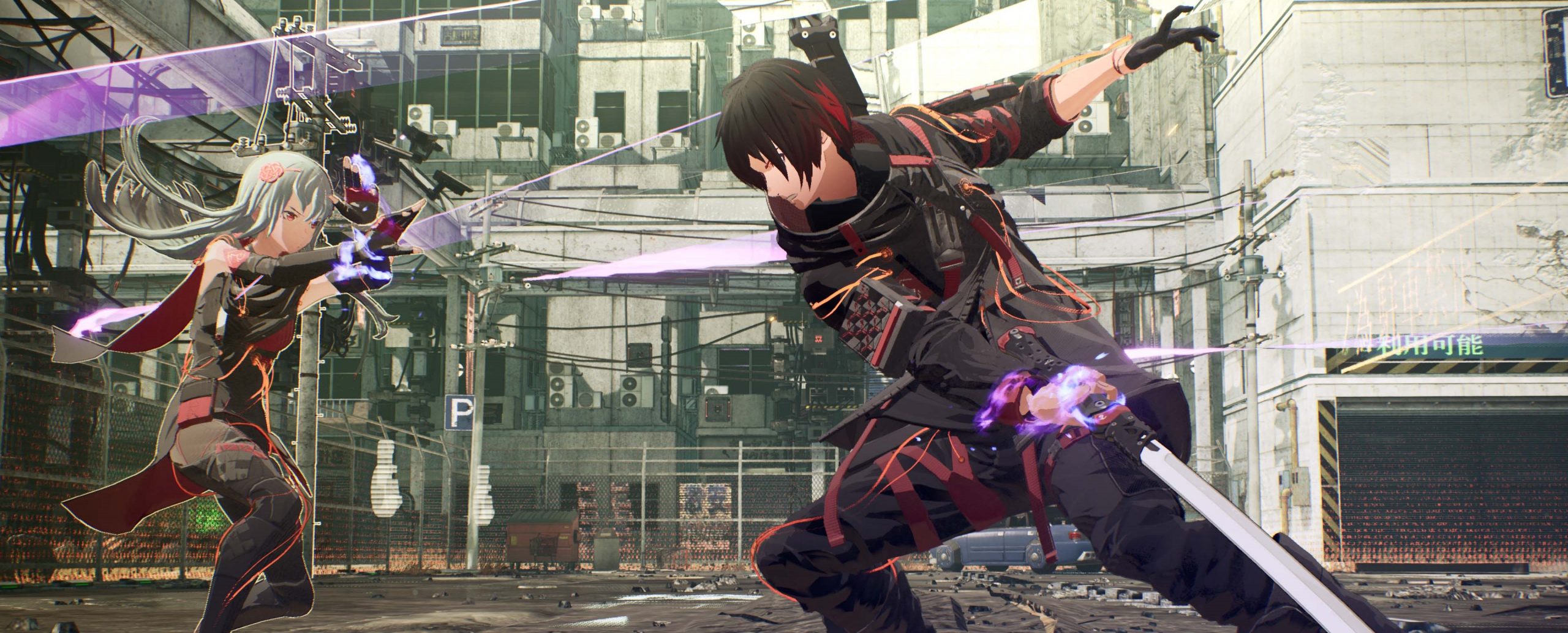 ⒸSCARLET NEXUS™ & ©Bandai Namco Entertainment Inc.
ⒸSCARLET NEXUS™ & ©Bandai Namco Entertainment Inc.
■Anabuki: We were cautious of how we relayed information to players as one of our efforts in delivering a good story. In SCARLET NEXUS, players only know what their character knows. For example, Yuito not being able to remember something because of his memory loss means that the player doesn’t have access to the same information. The game is designed so that the player becomes the character they take control of.
●Inoki: The character doesn’t know what the player doesn’t. That’s why, with rare exceptions, this game doesn’t use any “Meanwhile…” cutaways. There also aren’t any soliloquies by anyone other than the player character. Not being able to hear what other party members are thinking is something that’s noticeably different from other games.
We also discussed the possibility of showing players Yuito’s lost memories, since he technically had gone through the experience in the past, but it’s not possible to delete the memories of our players. We decided to go with the current implementation to show how scary it can be to have amnesia. But it would’ve been better if we had memory-erasing technology (laughs).
■Anabuki: Since the game was an original work, we needed to think about how to give players information through things like the worldbuilding and game rules. We also paid attention to things like having different dialog for both main characters when they talk to Companions in the Hideout as the player progresses through the story, or adding battle and traversal between conversations so it doesn’t bore the player. These are elements we take for granted in RPGs, but they take a significant amount of effort when done properly.
●Inoki: I remember we tried to do things like build excitement using battles and powerups, and creating emotionally heavy gameplay segments during emotional plot points in the story.
■Anabuki: An example of this is when we have Yuito and Kasane fight each other when the player unlocks the Brain Field (*7) ability. We managed to combine a high point in the story and battle system by introducing a new game mechanic.
*7: Brain Field
A mechanic that deploys a field so the player character can use their abilities at their maximum effectiveness.
●Inoki: We probably went through a several dozen revisions before we finished the script.
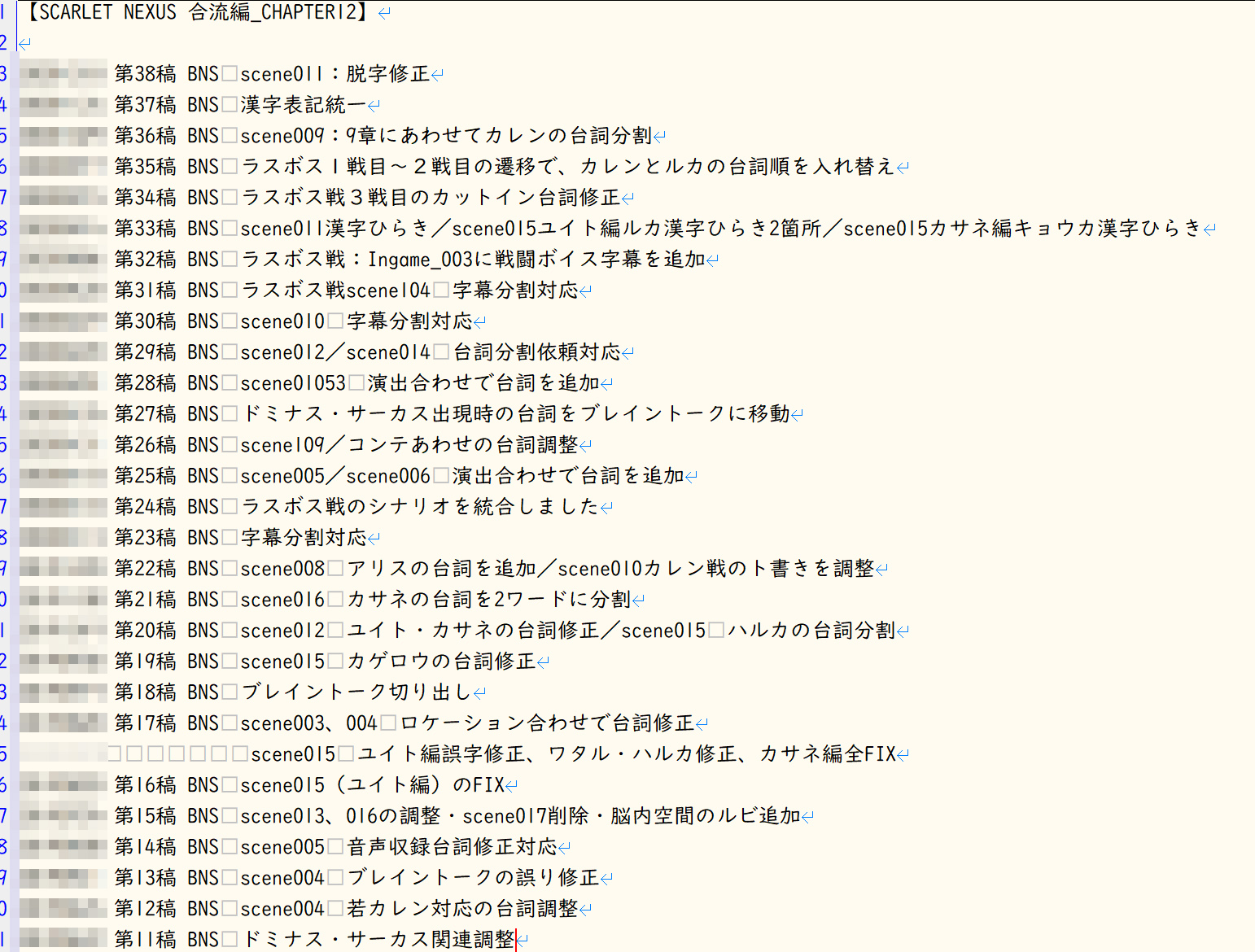
■Anabuki: Bond Episodes (*8) were a lot of work too. Making separate episodes for Yuito and Kasane meant that we had double the script volume of a single-character game.
*8: Bond Episode
Character-driven stories that deepen the bond between the main character and a Companion.
●Inoki: Yeah… but I think they were very effective in making players like the Companion characters. Of course, it was a lot of work to make two of everything (laughs).
■Anabuki: It must’ve been difficult for you to write natural-sounding lines since the concept was to have the characters become more intimate with each other with higher Bond levels.
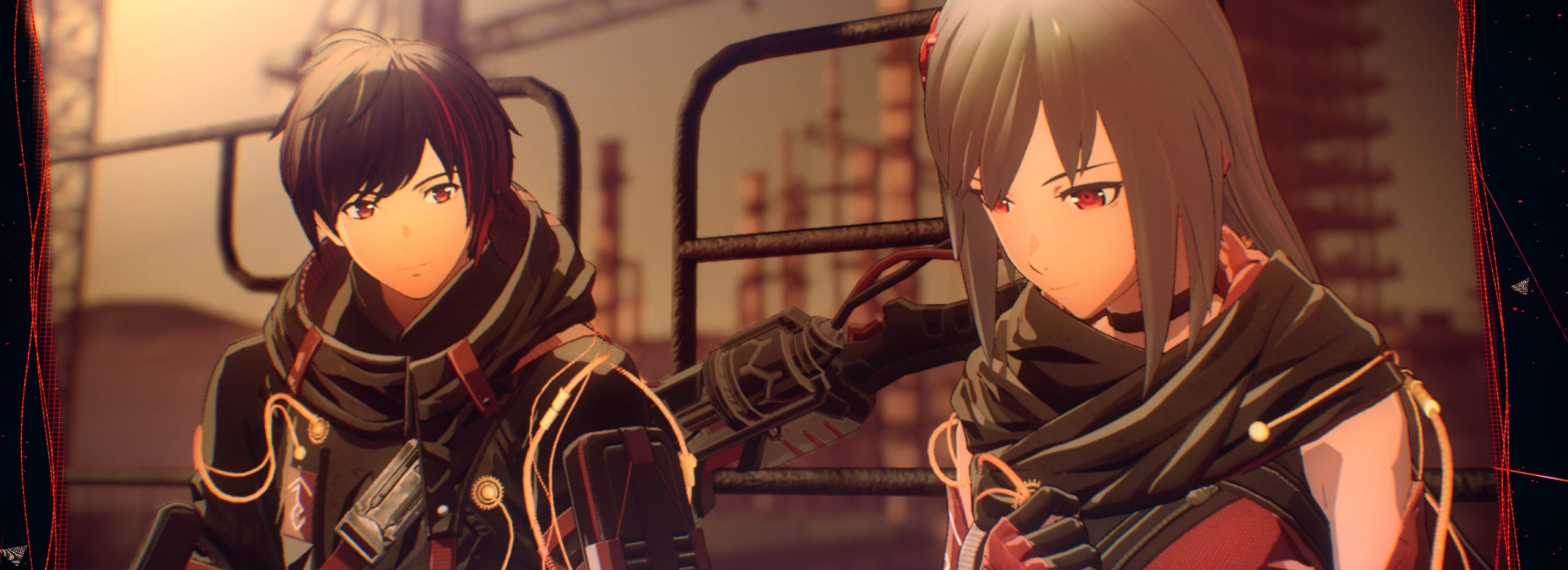 ⒸSCARLET NEXUS™ & ©Bandai Namco Entertainment Inc.
ⒸSCARLET NEXUS™ & ©Bandai Namco Entertainment Inc.
●Inoki: Bond level goes up to six in the game, and I had trouble expressing this as a six-stage gradient of “friendliness” in the dialog for each level, not to mention each character has their own personality. From the player’s perspective, it would take away from the game’s immersion if the writing made it seem like a character was suddenly really friendly with the player.
■Anabuki: The game world has something called Brain Talk (*9) and we had the dialog in that change as well as the characters started to get along with each other.
*9: Brain Talk
Lets ability users mentally converse with each other even over large distances
●Inoki: We also added Brain Messages (*10) as a way to complement the main story by giving characters a place to express their personal feelings. There was debate as to whether we should have the feature, but it turned out to be a really meaningful mechanic since we could show what characters were thinking, or create scenes that were like “I didn’t want to say this to everyone else, but…”
*10: Brain Messages
A form of communication between ability users using text messages, accessible from the game’s Library menu
■Anabuki: It was good that we could use it in emotional moments like “message from (character)” near the end of the game.
NEXT>>> Making of SCARLET NEXUS (Part 2)
Official Site
https://snx.bn-ent.net/
Publisher: Bandai Namco Entertainment Inc.
*The names of companies and products mentioned herein are trademarks or registered trademarks of their respective owners.
(*1, *2) Xbox Series X|S and Xbox One are trademarks or registered trademarks of Microsoft Corporation in the United States and its associated companies.
(*3, *4)“PlayStation” is a registered trademark or a trademark of Sony Interactive Entertainment Inc.
(*5)©2021 Valve Corporation. Steam and the Steam logo are trademarks or registered trademarks of Valve Corporation in the United States and/or other countries.
「SCARLET NEXUS™」
SCARLET NEXUS™ & ©Bandai Namco Entertainment Inc.




